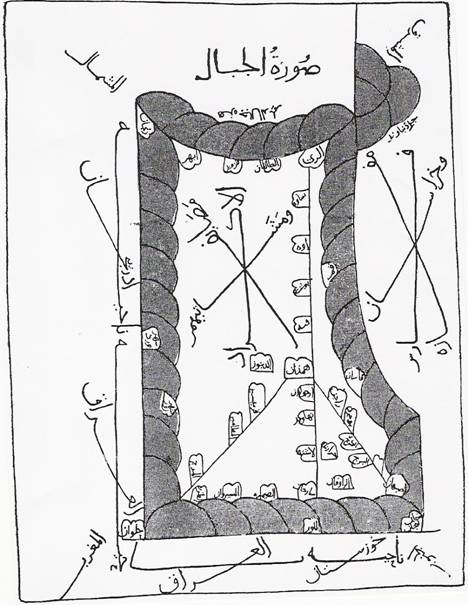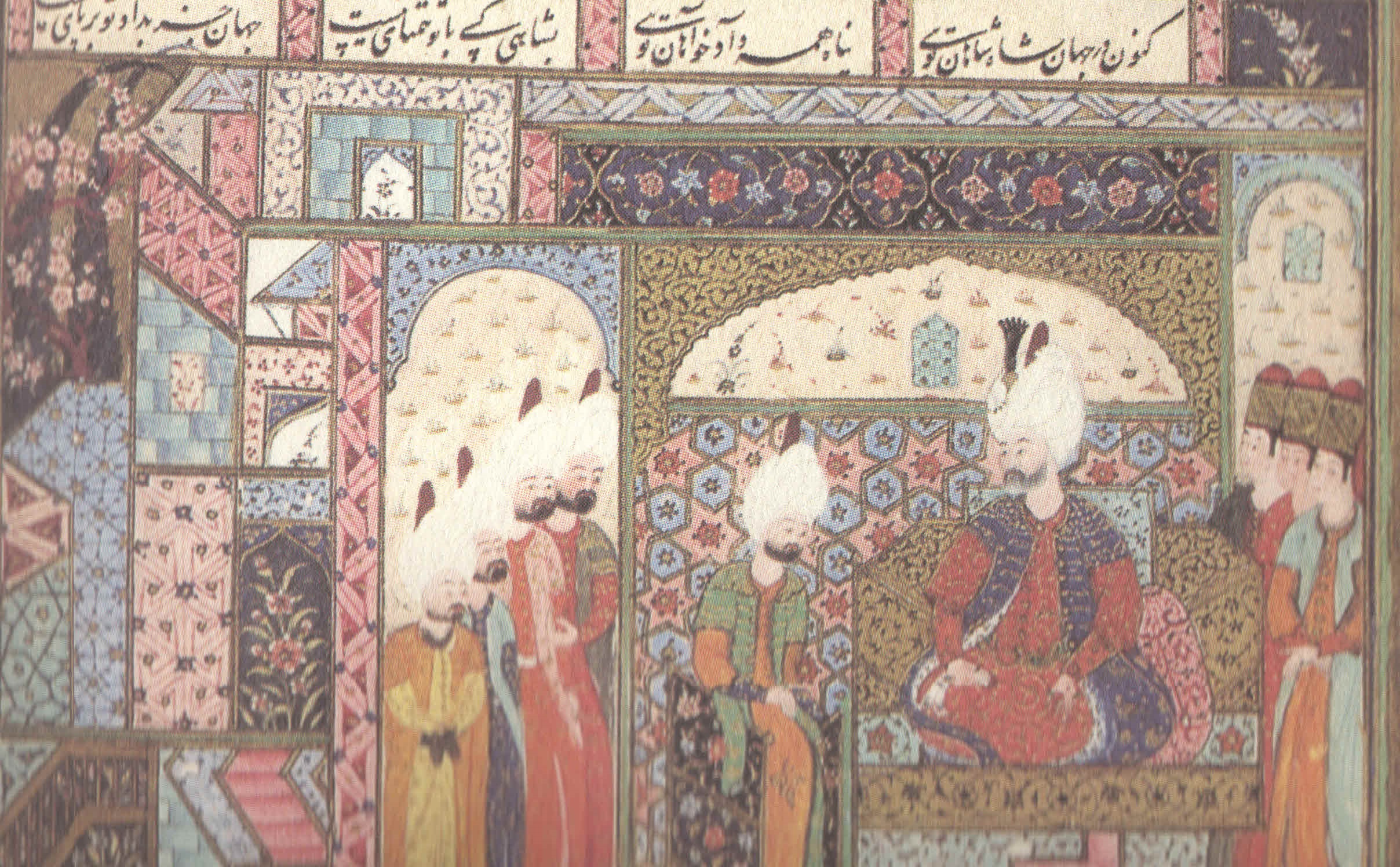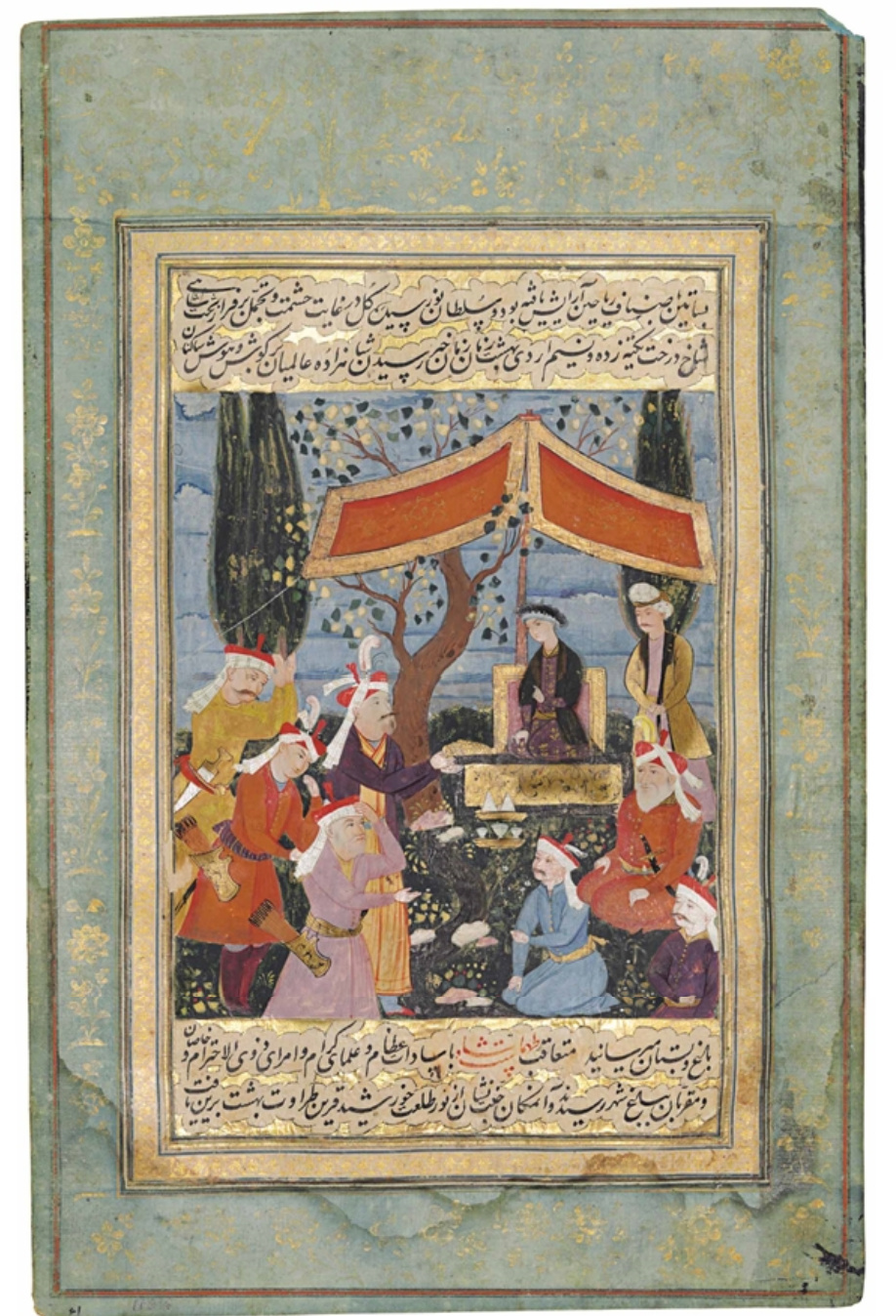|
Chegini (tribe)
The Chegini tribe ( ku, چەگینی ,Çengînî, fa, چگنی) is a mostly sedentary Kurdish tribe which lives in Lorestan Province and scattered around Qazvin Province and Fars Province in Iran. The tribe also lives in Kurdistan Region and Kirkuk in Iraq. While the tribe migrated to Lorestan from Northwestern Iran, not much info exist on its origins. Early scrutiny Charles MacGregor classified the tribe as Kurdish in his topographical and ethnographical oeuvre from 1872. Oskar Mann however argued in 1910 that the tribe's name "Čegīnī" might be related to the Romani term "čingāna". According to the Encyclopædia Iranica there exists some non-Kurdish tribes in iran that have the same name, such as the clan of the Amala tribe by the name of Čegīnī in the Qašqāʾī tribal confederacy and the Jabbāra Arabs of Fārs by the name of Awlād-e Čegīnī. History During the reign of Tahmasp I, the Chegini Kurds settled in Khorasan as they were on their way to India. ... [...More Info...] [...Related Items...] OR: [Wikipedia] [Google] [Baidu] |
Encyclopædia Iranica
''Encyclopædia Iranica'' is a project whose goal is to create a comprehensive and authoritative English language encyclopedia about the history, culture, and civilization of Iranian peoples from prehistory to modern times. Scope The ''Encyclopædia Iranica'' is dedicated to the study of Iranian civilization in the wider Middle East, the Caucasus, Southeastern Europe, Central Asia, and the Indian subcontinent. The academic reference work will eventually cover all aspects of Iranian history and culture as well as all Iranian languages and literatures, facilitating the whole range of Iranian studies research from archeology to political sciences. It is a project founded by Ehsan Yarshater in 1973 and currently carried out at Columbia University's Center for Iranian Studies. It is considered the standard encyclopedia of the academic discipline of Iranistics. The scope of the encyclopedia goes beyond modern Iran (also known as "Persia") and encompasses the entire Iranian cul ... [...More Info...] [...Related Items...] OR: [Wikipedia] [Google] [Baidu] |
Kurdistan
Kurdistan ( ku, کوردستان ,Kurdistan ; lit. "land of the Kurds") or Greater Kurdistan is a roughly defined geo-cultural territory in Western Asia wherein the Kurds form a prominent majority population and the Kurdish culture, languages, and national identity have historically been based. Geographically, Kurdistan roughly encompasses the northwestern Zagros and the eastern Taurus mountain ranges. Kurdistan generally comprises the following four regions: southeastern Turkey ( Northern Kurdistan), northern Iraq (Southern Kurdistan), northwestern Iran ( Eastern Kurdistan), and northern Syria ( Western Kurdistan). Some definitions also include parts of southern Transcaucasia. Certain Kurdish nationalist organizations seek to create an independent nation state consisting of some or all of these areas with a Kurdish majority, while others campaign for greater autonomy within the existing national boundaries. Historically, the word "Kurdistan" is first attested in 11th ce ... [...More Info...] [...Related Items...] OR: [Wikipedia] [Google] [Baidu] |
Encyclopaedia Islamica
The ''Encyclopaedia Islamica'' is an encyclopedia on Islamic and Iranian studies published by Brill, comprising a projected 16-volume translation of selected articles from the new Persian ''Dā'erat-ol-Ma'āref-e Bozorg-e Eslāmi'' ( fa, دائرةالمعارف بزرگ اسلامی, "''The Great Islamic Encyclopaedia''"), supplemented by additional articles written in English by scholars affiliated with the Institute of Ismaili Studies.Mousa al-Reza WahdatiReview of Encyclopaedia Islamica Volume 3(Adab – al-Bāb al-Ḥādī ͑ashar) ed. by Farhad Daftary, Wilferd Madelung. Journal of Shi'a Islamic Studies. Volume 8, Number 1, Winter 2015. pp. 107–109.Suzanne M. Estelle-HolmerReview of Wilferd Madelung and Farhad Daftary, eds. Encyclopaedia Islamica Vol. 1: ‘Aba’- Abu Hanifa. Theological Librarianship. An Online Journal of the American Theological Library Association. Volume 2, Number 2 • December 2009. pp. 103–104. The Persian-language project has been led by Ka ... [...More Info...] [...Related Items...] OR: [Wikipedia] [Google] [Baidu] |
Kurdish Tribes
The following is a list of tribes of Kurdish people, an Iranic ethnic group from the geo-cultural region of Kurdistan in Western Asia. Iraq Baghdad Governorate The following tribes are present in Baghdad Governorate: *Feyli (tribe), Feyli tribe Diyala Governorate The following tribes are present in Diyala Governorate: *Bajalan (tribe), Bajalan tribe *Biban tribe *Dilo tribe *Feyli (tribe), Feyli tribe *Hamawand (tribe), Hamawand tribe *Jaff (tribe), Jaff tribe *Kaganlu tribe *Kaka'i tribe (Yarsanism) *Kakevar tribe *Kalhor (tribe), Kalhor tribe *Leylani tribe *Mamhajan tribe *Palani tribe *Qarah Alush tribe *Suramiri *Şêxbizin (tribe), Şêxbizin tribe *Tilishani tribe *Umarmil tribe *Zargush tribe *Zand tribe, Zand tribe *Zangana (tribe), Zangana tribe Dohuk Governorate The following tribes are present in Dohuk Governorate: *Babiri tribe *Bamernî tribe *Barzani (tribe), Barzani tribe *Basidkî tribe (Yazidis, Yezidi) *Berwari tribe *Belesinî tribe (Yezidi) *Birîmenî trib ... [...More Info...] [...Related Items...] OR: [Wikipedia] [Google] [Baidu] |
Mirza (noble)
Mirza ( or ; fa, میرزا) is a name of Persian origin. It is used as a surname or prefix to identify patriarchal lineage. It is a historical royal and noble title, denoting the rank of a royal prince, high nobleman, distinguished military commander, or a scholar. Specifically, it was used as a title by (and today signifies patriarchal lineage to) the various Persian Empires, the Nogai Horde, Shirvanshahs and Circassians of the European Caucasus, as well as the Muslim Rajputs and mainly the Mughals / Moguls, both of the Indian Subcontinent. It was also a title bestowed upon members of the highest aristocracies in Tatar states, such as the Khanates of Kazan and Astrakhan. Etymology The original title ''Mīrzā'' or ''Merzāh'' is derived from the Persian term ''Amīrzādeh'' which literally means ''child of the Amīr'' or ''child of the ruler''. ''Amīrzādeh'' in turn consists of the Arabic title ''Amīr'' (English: ''Emir''), meaning "commander" and the Persian ... [...More Info...] [...Related Items...] OR: [Wikipedia] [Google] [Baidu] |
Emir
Emir (; ar, أمير ' ), sometimes transliterated amir, amier, or ameer, is a word of Arabic origin that can refer to a male monarch, aristocrat, holder of high-ranking military or political office, or other person possessing actual or ceremonial authority. The title has a long history of use in the Arab World, East Africa East Africa, Eastern Africa, or East of Africa, is the eastern subregion of the African continent. In the United Nations Statistics Division scheme of geographic regions, 10-11-(16*) territories make up Eastern Africa: Due to the historical ..., West Africa, Central Asia, and the Indian subcontinent. In the modern era, when used as a formal monarchical title, it is roughly synonymous with "prince", applicable both to a son of a hereditary monarch, and to a reigning monarch of a sovereign principality, namely an emirate. The female, feminine form is emira ( '), a cognate for "princess". Prior to its use as a monarchical title, the term "emir" was ... [...More Info...] [...Related Items...] OR: [Wikipedia] [Google] [Baidu] |
Brigandage
Brigandage is the life and practice of highway robbery and plunder. It is practiced by a brigand, a person who usually lives in a gang and lives by pillage and robbery.Oxford English Dictionary second edition, 1989. "Brigand.2" first recorded usage of the word was by "H. LUTTRELL in Ellis ''Orig. Lett.'' II. 27 I. 85 Ther ys no steryng of none evyl doers, saf byonde the rivere of Sayne..of certains brigaunts." The word brigand entered English as ''brigant'' via French from Italian as early as 1400. Under the laws of war, soldiers acting on their own recognizance without operating in chain of command, are brigands, liable to be tried under civilian laws as common criminals. However, on occasions brigands are not mere malefactors, but may be the last resort of people subject to invasion. Bad administration and suitable terrain encourage the development of brigands. Historical examples of brigands (often called so by their enemies) have existed in territories of France, Greece and t ... [...More Info...] [...Related Items...] OR: [Wikipedia] [Google] [Baidu] |
Sharafkhan Bidlisi
Sharaf al-Din Khan b. Shams al-Din b. Sharaf Beg Bedlisi ( Kurdish: شەرەفخانی بەدلیسی, ''Şerefxanê Bedlîsî''; fa, شرفالدین خان بن شمسالدین بن شرف بیگ بدلیسی; 25 February 1543 – ) was a Kurdish Emir of Bitlis. He was also a historian, writer and poet. He wrote exclusively in Persian. Born in the Qara Rud village, in central Iran, between Arak and Qom, at a young age he was sent to the Safavids' court and obtained his education there. He is the author of Sharafnama, one of the most important works on medieval Kurdish history, written in 1597. He created a good picture of Kurdish life and Kurdish dynasties in the 16th century in his works. Outside Iran and Kurdish-speaking countries, Sharaf Khan Bidlisi has influenced Kurdish literature and societies through the translation of his works by other scholars. He was also a gifted artist and a well-educated man, ... [...More Info...] [...Related Items...] OR: [Wikipedia] [Google] [Baidu] |
India
India, officially the Republic of India ( Hindi: ), is a country in South Asia. It is the seventh-largest country by area, the second-most populous country, and the most populous democracy in the world. Bounded by the Indian Ocean on the south, the Arabian Sea on the southwest, and the Bay of Bengal on the southeast, it shares land borders with Pakistan to the west; China, Nepal, and Bhutan to the north; and Bangladesh and Myanmar to the east. In the Indian Ocean, India is in the vicinity of Sri Lanka and the Maldives; its Andaman and Nicobar Islands share a maritime border with Thailand, Myanmar, and Indonesia. Modern humans arrived on the Indian subcontinent from Africa no later than 55,000 years ago., "Y-Chromosome and Mt-DNA data support the colonization of South Asia by modern humans originating in Africa. ... Coalescence dates for most non-European populations average to between 73–55 ka.", "Modern human beings—''Homo sapiens''—originated in Africa. Th ... [...More Info...] [...Related Items...] OR: [Wikipedia] [Google] [Baidu] |
Greater Khorasan
Greater Khorāsān,Dabeersiaghi, Commentary on Safarnâma-e Nâsir Khusraw, 6th Ed. Tehran, Zavvâr: 1375 (Solar Hijri Calendar) 235–236 or Khorāsān ( pal, Xwarāsān; fa, خراسان ), is a historical eastern region in the Iranian Plateau between Western and Central Asia. The name ''Khorāsān'' is Persian and means "where the sun arrives from" or "the Eastern Province".Sykes, M. (1914). "Khorasan: The Eastern Province of Persia". ''Journal of the Royal Society of Arts'', 62(3196), 279-286.A compound of ''khwar'' (meaning "sun") and ''āsān'' (from ''āyān'', literally meaning "to come" or "coming" or "about to come"). Thus the name ''Khorasan'' (or ''Khorāyān'' ) means "sunrise", viz. " Orient, East"Humbach, Helmut, and Djelani Davari, "Nāmé Xorāsān", Johannes Gutenberg-Universität Mainz; Persian translation by Djelani Davari, published in Iranian Languages Studies Website. MacKenzie, D. (1971). ''A Concise Pahlavi Dictionary'' (p. 95). London: Oxford Univers ... [...More Info...] [...Related Items...] OR: [Wikipedia] [Google] [Baidu] |
Tahmasp I
Tahmasp I ( fa, طهماسب, translit=Ṭahmāsb or ; 22 February 1514 – 14 May 1576) was the second shah of Safavid Iran from 1524 to 1576. He was the eldest son of Ismail I and his principal consort, Tajlu Khanum. Ascending the throne after the death of his father on 23 May 1524, the first years of Tahmasp's reign were marked by civil wars between the Qizilbash leaders until 1532, when he asserted his authority and began an absolute monarchy. He soon faced a long-lasting war with the Ottoman Empire, which was divided into three phases. The Ottoman sultan, Suleiman the Magnificent, tried to install his own candidates on the Safavid throne. The war ended with the Peace of Amasya in 1555, with the Ottomans gaining sovereignty over Iraq, much of Kurdistan, and western Georgia. Tahmasp also had conflicts with the Uzbeks of Bukhara over Khorasan, with them repeatedly raiding Herat. In 1528, at the age of fourteen, he defeated the Uzbeks in the Battle of Jam by using artillery, un ... [...More Info...] [...Related Items...] OR: [Wikipedia] [Google] [Baidu] |



.jpg)



